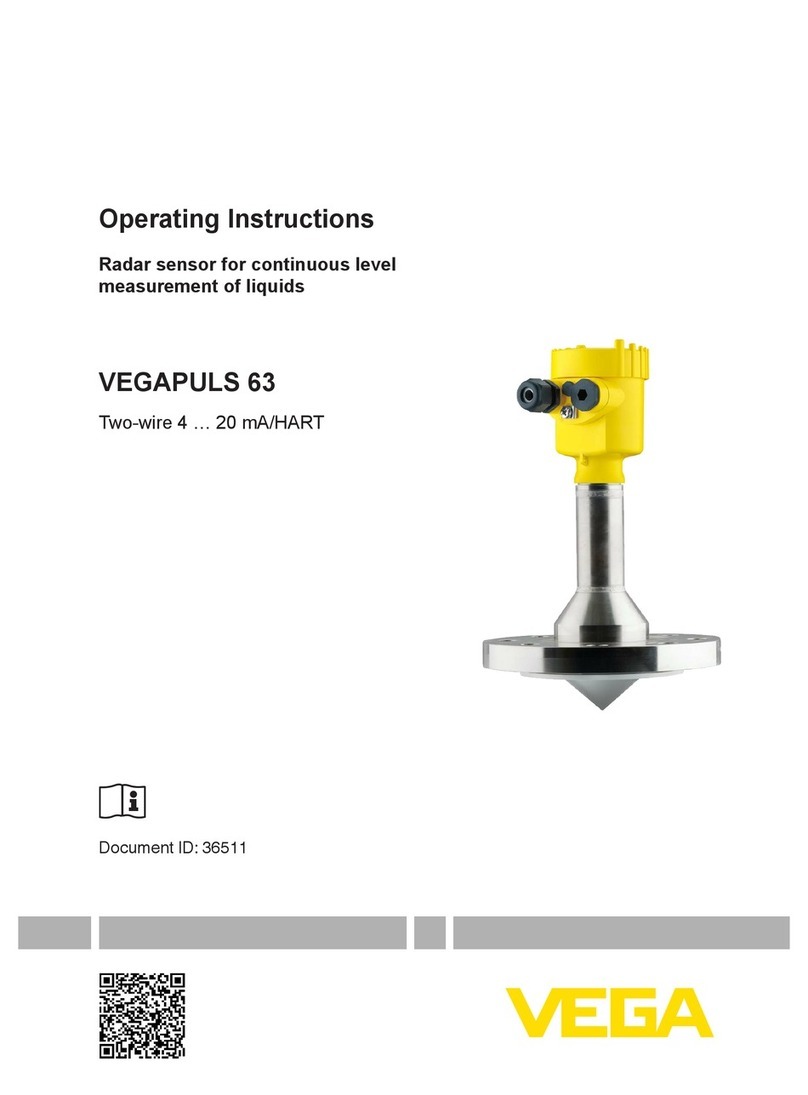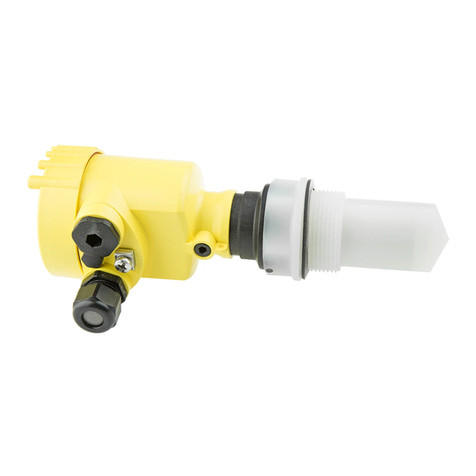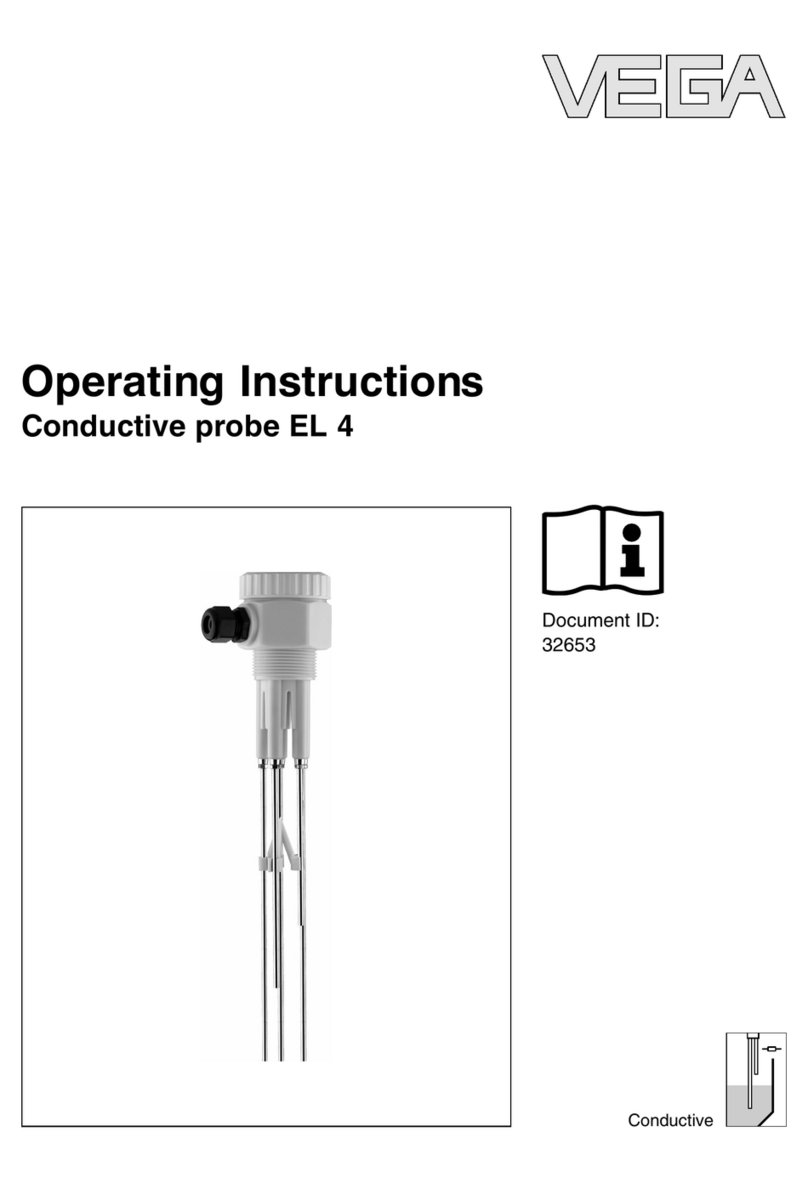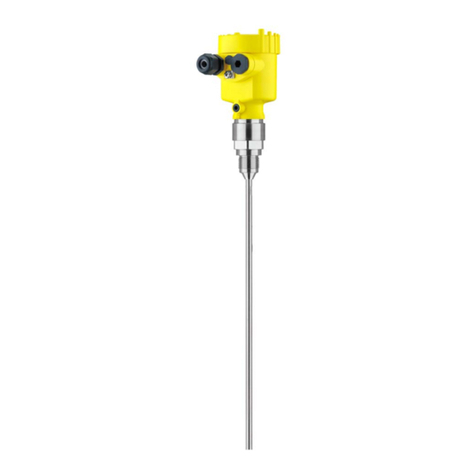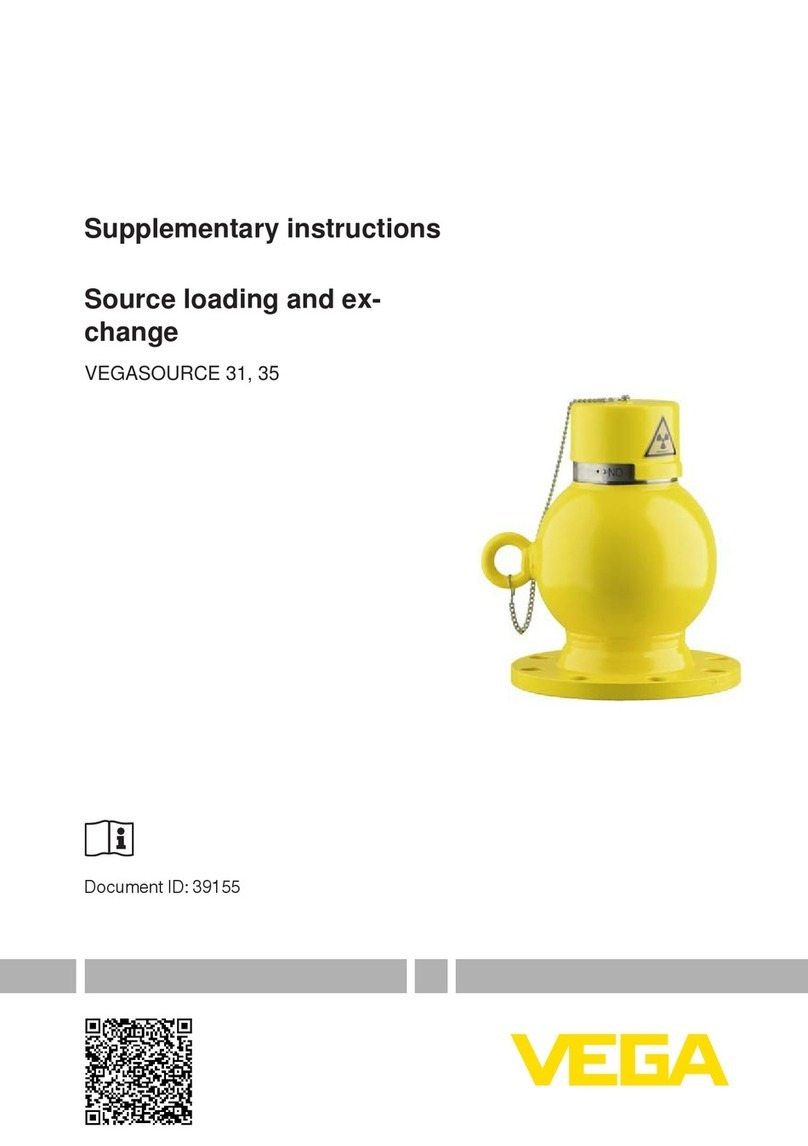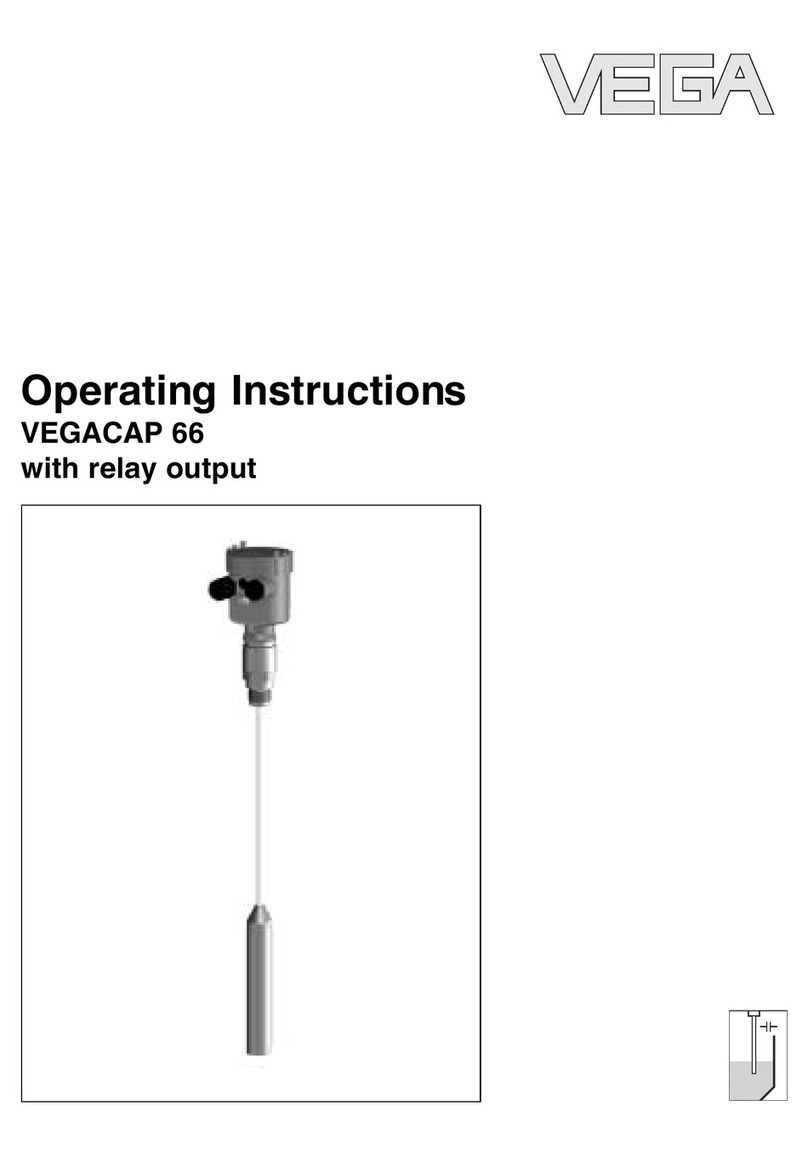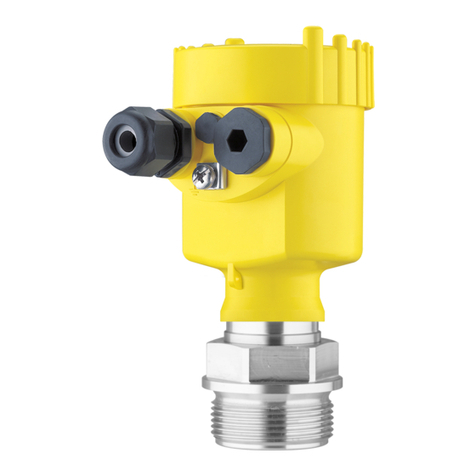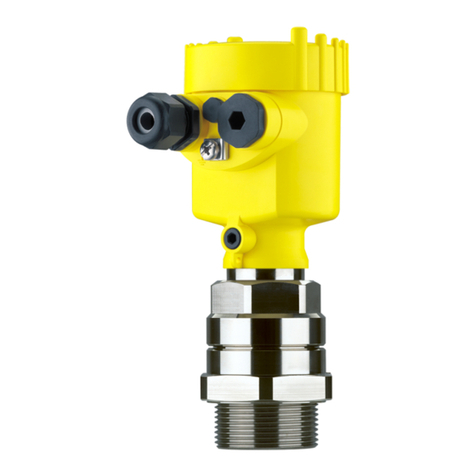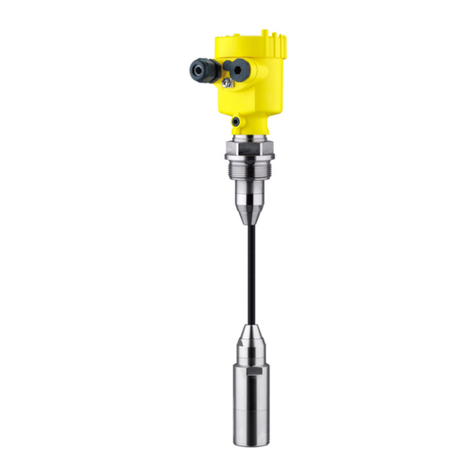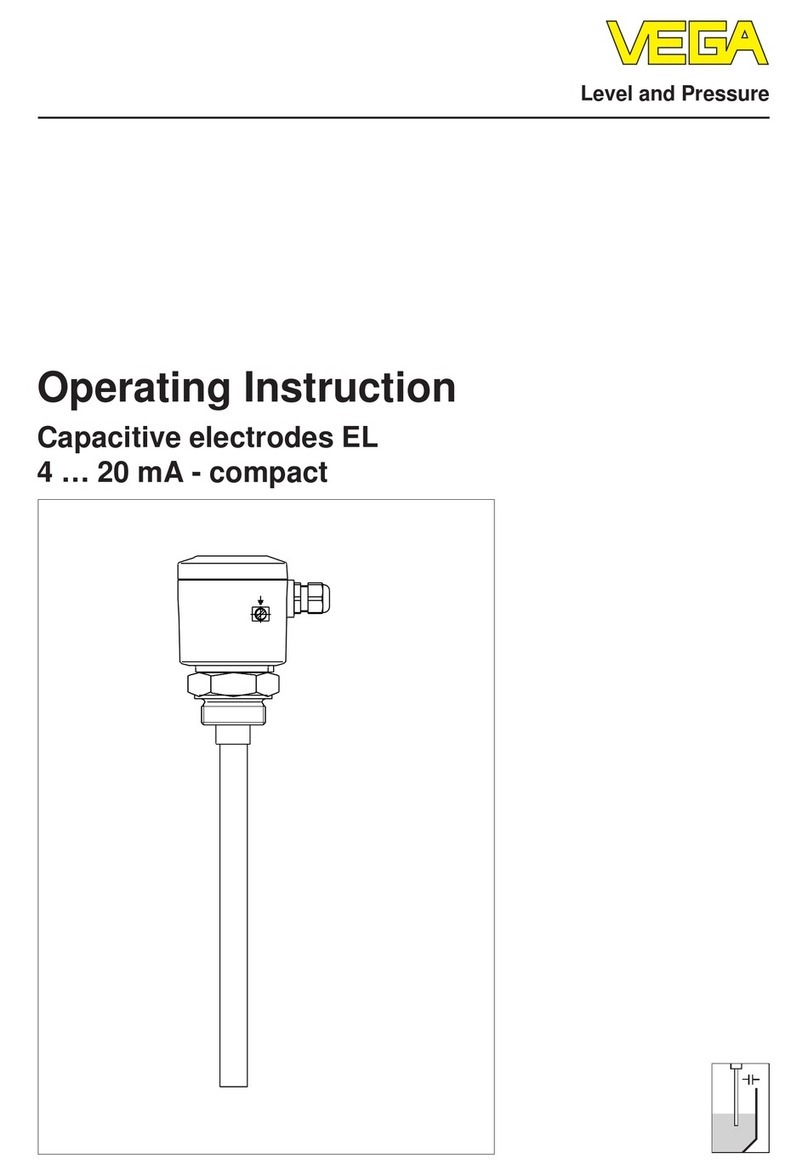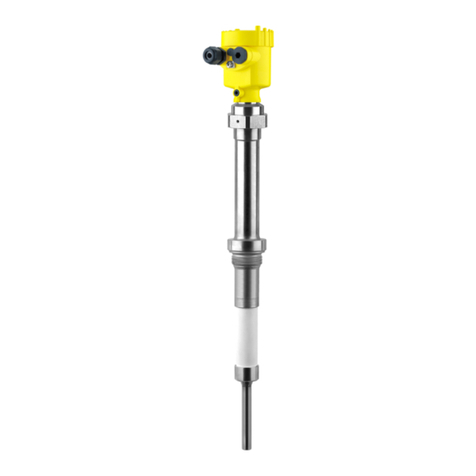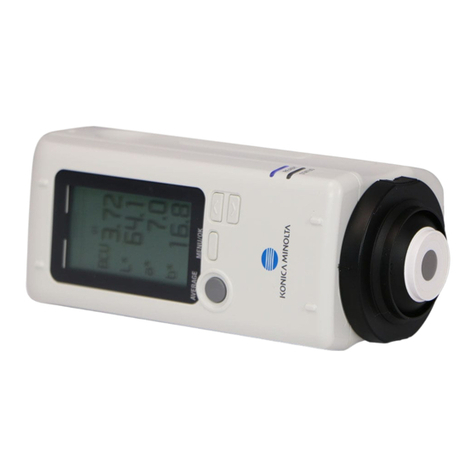2
Contents
VEGAPULS WL 61 • 4 … 20 mA/HART - two-wire
38061-EN-170830
Contents
1 About this document
1.1 Function ........................................................................................................................... 4
1.2 Target group ..................................................................................................................... 4
1.3 Symbols used................................................................................................................... 4
2 For your safety
2.1 Authorised personnel ....................................................................................................... 5
2.2 Appropriate use................................................................................................................ 5
2.3 Warning about incorrect use............................................................................................. 5
2.4 General safety instructions............................................................................................... 5
2.5 EU conformity................................................................................................................... 6
2.6 NAMUR recommendations .............................................................................................. 6
2.7 Radio licenses for Europe ................................................................................................ 6
2.8 Radio license for USA/Canada......................................................................................... 7
2.9 Restrictions for the USA and Canada............................................................................... 7
2.10 Installation and operation in the USA and Canada ........................................................... 8
2.11 Security concept, Bluetooth operation.............................................................................. 8
2.12 Environmental instructions ............................................................................................... 8
3 Product description
3.1 Conguration.................................................................................................................... 9
3.2 Principle of operation...................................................................................................... 10
3.3 Adjustment ..................................................................................................................... 11
3.4 Packaging, transport and storage................................................................................... 12
3.5 Accessories and replacement parts ............................................................................... 13
4 Mounting
4.1 General instructions ....................................................................................................... 14
4.2 Mounting versions.......................................................................................................... 14
4.3 Mounting preparations, mounting strap.......................................................................... 17
4.4 Mounting instructions ..................................................................................................... 17
5 Connecting to power supply
5.1 Preparing the connection ............................................................................................... 23
5.2 Wiring plan ..................................................................................................................... 23
5.3 Switch-on phase............................................................................................................. 24
6 Setup with smartphone/tablet (Bluetooth)
6.1 Preparations................................................................................................................... 25
6.2 Connecting..................................................................................................................... 25
6.3 Sensor parameter adjustment........................................................................................ 26
7 Setup with PC/notebook (Bluetooth)
7.1 Preparations................................................................................................................... 27
7.2 Connecting..................................................................................................................... 27
7.3 Parameter adjustment .................................................................................................... 28
8 Setup with VEGADIS 82
8.1 Principle of operation and connection ............................................................................ 29
8.2 Adjustment volume......................................................................................................... 29
8.3 Setup steps .................................................................................................................... 30
9 Setup with PC/notebook (VEGACONNECT)


